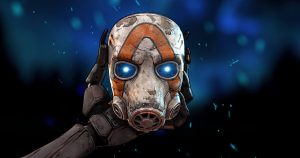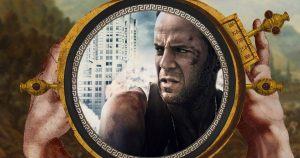
It’s impossible to think of Simogo’s inventive library of games without conjuring the works of composer Daniel Olsén in your mind. From the chilling Year Walk, the hyperpop aesthetic of Sayonara Wild Hearts, or the mysterious Lorelei and the Laser Eyes, this catalog of indie titles take root in our minds in part because of how thematically their soundtracks match the gameplay and environment.
To find out how Olsén thinks about his projects, we reached out to him as part of Polygon FM, our theme week celebrating the intersection of music and games.
Polygon: Was there a game soundtrack or song that inspired you to pursue creating game music? Can you set the scene of what that felt like for you, and why the music was so effective?
Daniel Olsén: There wasn’t just one soundtrack that inspired me. I grew up in the era of 8-bit and 16-bit consoles and Commodore 64 — and like many others I was taken away by the NES classics like Super Mario, Zelda, and Mega Man. I think one of the great things about video game music is that when you step away from a game, the one thing you still have with you is the melodies, chords, and rhythms. I didn’t own my own consoles as a kid, but I would always walk around singing my favorite tunes and that would transport me back to the feeling of the games. I did own a C64 and sometimes I would just start games to hear the music from games like The Last Ninja, Delta, and so on. Actually, sometimes, you just wanted to progress to hear more of the music. Even today, I often try to recreate the feeling I got from many of those soundtracks.
Can you break down one of your own songs and its influences? Was it inspired by game soundtracks, other music, or something else?
In “Interrogation” [from Lorelei], I used the theme from “Woman on the Other Side”, another song from Lorelei and the Laser Eyes. It was also inspired partly by Angelo Badalamenti’s walking baselines and slow jazzy drums in “Audrey’s Dance” from Twin Peaks. This scene in the game also resembles the interrogational aspects of our previous game DEVICE 6, so it felt fitting to add some gritty surf guitars to make a connection between the two.
For the duration of the song, we go between an interrogation with a gun to the head to walking around in dreamy, noisy old memories and back again. If the music doesn’t follow it feels very flat, so we opted for dynamic music in this part of the game. We wanted to have the layers be different enough to allow for a varied dramatic expression. From dry vinyl crackles to dreamy piano to a horror vibe, even the sound effects are part of the final musical impression. When you’re walking around in the memories, we also changed the footsteps to vinyl noise and crackles to fit the theme.
What are the main instruments used to record the soundtrack for Lorelei? How did you choose those instruments?
The idea was to have two sides — the obviously digital, and the obviously human/analogue. Because the art style of the game mixes analogue photos with broken digital art, we wanted the music to reflect the same thing. So most of the songs are based on very digital-sounding instruments mixed with cello and vocals performed by Linnea Olsson, or guitar by Jonathan Eng. I spent a lot of time making those sounds distinctly different, but at the same time harmonizing with each other.
Is there anything else I should know about your approach to composing video game music?
The most important thing for me is that the music fits with whatever the game is, rather than being good on its own. You have to create a sort of universe for the music that can add to the lore of the game. It’s like an extension of the video game universe. It gives you the chance to tell stories about a bigger world and it gives players the opportunity to imagine parts that are not portrayed in the game. I often hear great music in games, but it doesn’t fit the vibe, or the songs are not in the same coherent universe. That can make the impression of the game feel a bit disjointed.















